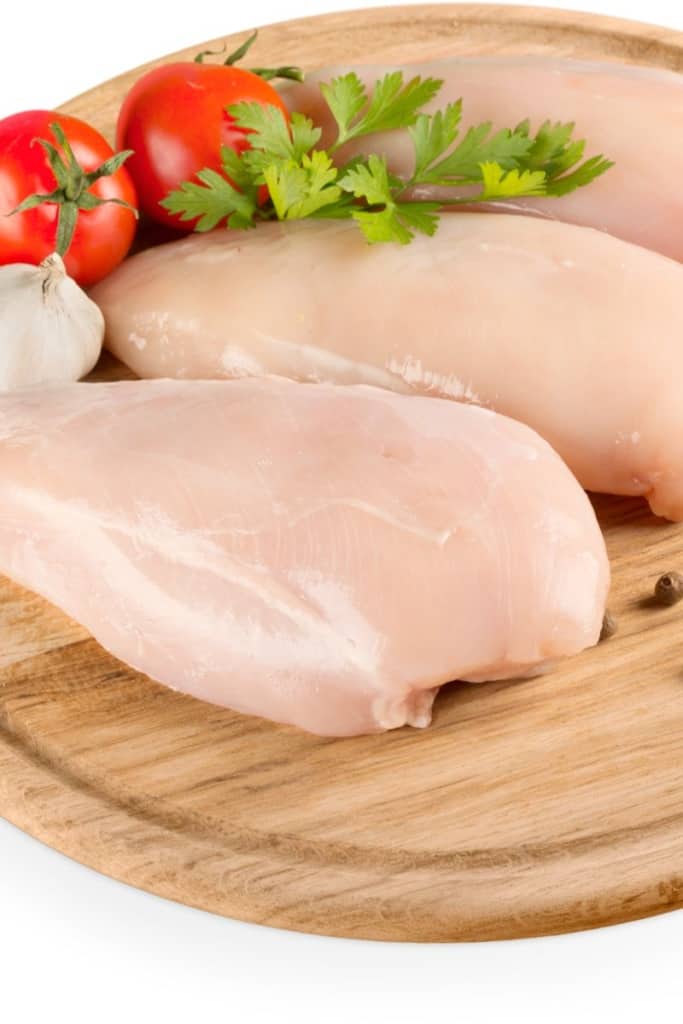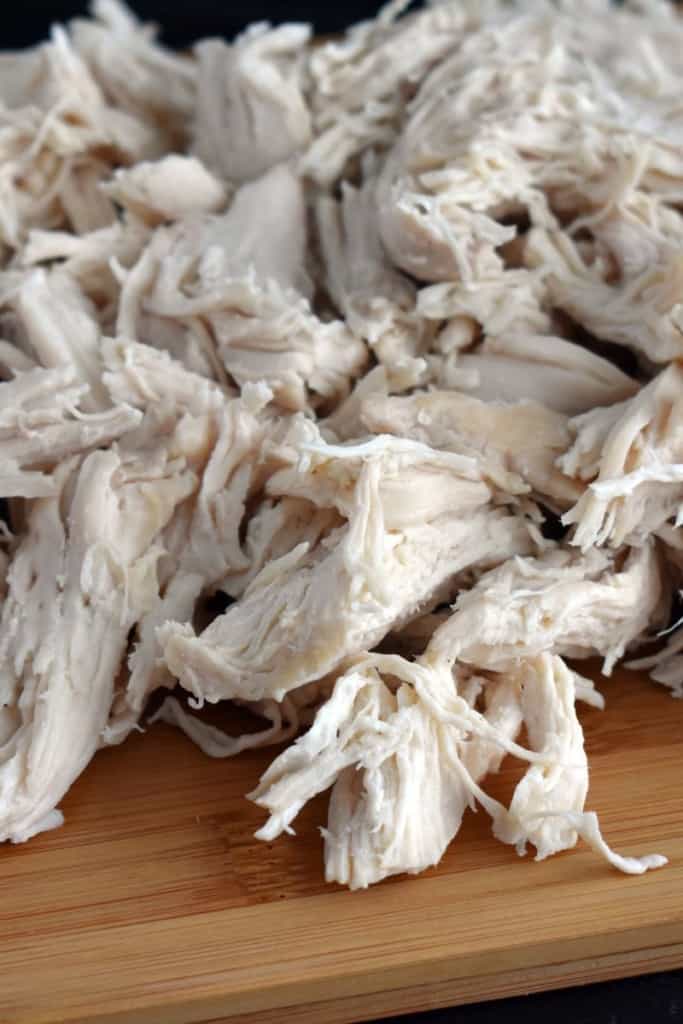Chicken is a versatile and popular ingredient used in many recipes. However recipes may call for chicken by weight (pounds) or by volume (cups). This can cause confusion when shopping for and preparing chicken. So how much chicken is actually in a cup? Let’s take a detailed look at the chicken-to-cup conversion.
Key Takeaways on Chicken Weight to Volume
-
Approximately 1⁄3 to 1⁄2 pound of raw, boneless chicken breast equals 1 cup. This converts to around 150-225 grams.
-
For chicken on the bone, you need about 2⁄3 pound to yield 1 cup of meat. That equals roughly 300 grams.
-
The exact weight depends on several factors like shred size, packing density, chicken cut, and cooking method.
-
Understanding the weight to volume conversion allows you to accurately substitute pounds for cups or vice versa in recipes.
Why Weight vs Volume Matters for Chicken
Converting between weight and volume is important for several reasons:
-
Many recipes specify chicken quantities in cups rather than pounds. Knowing the conversion allows you to buy the right amount.
-
Accurately measuring portions is crucial for nutritional tracking, meal planning, and controlling calorie intake.
-
When a recipe calls for pounds but you only have a certain number of cups, you can easily adjust.
-
You can determine the number of servings if you know the chicken weight per cup.
-
Buying and preparing the correct amount saves money and reduces food waste.
So whether a recipe calls for “1 pound of shredded chicken” or “2 cups chopped chicken”, understanding the weight-to-volume ratio is essential for cooking success.
Factors That Impact Chicken Weight per Cup
Several key factors influence the correlation between pounds and cups of chicken:
Boneless vs Bone-In
Boneless chicken weighs less per cup than chicken on the bone. That’s because bone-in chicken includes non-edible bones that don’t contribute to the final cup volume. For bone-in, you need about twice as much raw chicken by weight to equal a cup.
Cut of Chicken
Chicken breasts tend to have a more uniform density and moisture content than thighs or wings. Therefore, breast meat provides the most consistent cups-to-pounds conversion. Dark meat and chicken thighs may have slightly more fat, altering the ratio.
Shred Size
The finer you shred or chop the chicken, the more tightly it can pack into a cup, increasing the weight. Large, chunky shreds don’t compact as densely, lowering the pounds per cup.
Packing Density
Loosely packed chicken weighs less per cup than firmly packed. Some recipes specify packing instructions, so pay close attention.
Cooked vs Raw
This conversion applies to cooked chicken. Raw chicken has a very different density and moisture content. Do not use cups for measuring raw chicken.
Moisture Content
The juicier the cooked chicken, the heavier it will be per cup. Pat chicken dry before measuring for a more accurate reading.
Handy Conversion Rates for Chicken Pounds to Cups
Here are some handy benchmarks for the pounds to cups conversion:
-
1⁄3 to 1⁄2 pound of boneless, cooked chicken breast equals approximately 1 cup
-
2⁄3 pound of bone-in, cooked chicken pieces provides about 1 cup of shredded meat
-
1 whole chicken breast yields around 11⁄2 to 13⁄4 cups shredded chicken
-
A standard 4 ounce chicken breast is roughly 3⁄4 cup shredded
-
1 pound of boneless breasts equals 3 to 4 cups shredded chicken
-
2 pounds of bone-in chicken pieces provides about 3 cups shredded
Converting Cups to Pounds of Chicken
You can also go the other way and determine pounds of chicken based on cups:
-
1 cup shredded chicken equals 1⁄3 to 1⁄2 pound boneless breast
-
11⁄2 cups shredded chicken is approximately 1 pound if bone-in
-
2 cups shredded chicken is around 2⁄3 pound boneless or 1 pound bone-in
-
3 cups chopped chicken is about 1 pound if boneless, 11⁄2 pounds if bone-in
-
4 cups shredded chicken converts to around 11⁄3 pounds boneless or 2 pounds bone-in
Tips for Measuring Chicken Accurately
Follow these tips for reliable results when measuring chicken:
-
Use a food scale for the most precision
-
Shred chicken into uniformly sized pieces
-
Pack loosely unless the recipe states otherwise
-
Account for extra moisture if the chicken seems wet
-
Clarify if the recipe calls for lightly packed or firmly packed cups
-
Adjust for differences in cut, like thighs vs breast meat
-
Specify if the cup size referenced is smaller or larger than 1 standard US cup (237 mL)
Why Accuracy Matters
You might be wondering why nitpicking over slight differences in chicken weights and volumes really matters. But consider these advantages of accurate measurement:
-
Ensures recipes turn out right, especially baked goods
-
Allows better calorie and macronutrient tracking
-
Helps with portion control and meal planning
-
Reduces food waste from over-preparing
-
Saves money by purchasing only what you need
So take the time to weigh and measure precisely. It makes a surprising difference in your cooking!
Frequently Asked Questions
How much protein is in a cup of shredded chicken?
One cup of cooked chicken breast contains around 35-45 grams of protein depending on size. Chicken thigh has approximately 30-35 grams per cup.
Can I use this for other types of poultry like turkey?
The conversions won’t be exact due to the differences in turkey’s density and moisture content, but they provide a reasonable estimate. Weigh for accuracy.
What about frozen chicken from the store?
Pre-cooked, frozen chicken tends to be shredded finer and slightly drier than homemade. Start with a 1⁄2 pound per cup estimate for frozen, but weigh it.
How can I adjust if I only have pounds but the recipe calls for cups?
Use the basic conversion that 1 pound of boneless chicken equals 3-4 cups. For example, if you only have 1 pound chicken but the recipe calls for 2 cups, you have more than enough.
Why does packing chicken tightly or loosely matter?
Loosely packed chicken weighs up to 25% less than firmly packed chicken per cup. Follow recipe instructions carefully regarding packing.
Should I weigh or measure chicken by volume?
Weighing chicken gives the most accurate, consistent results since it eliminates variances in shredding, moisture, and packing. Use a food scale whenever possible.
The Takeaway

Which is the best cut of chicken for recipes?
I usually use chicken breasts because of the lower fat content, and the breast meat is easy to shred. It’s also said to be the healthiest part of the chicken because of the lower calories and fat. But chicken thighs are just as easy and can sometimes be cheaper.
A 4-oz chicken breast contains about 35 grams of protein and 4 grams of fat. And 4 oz of chicken thigh contains 27 grams of protein and 10 grams of fat. Either way, chicken has a lot of protein and will help keep you full no matter what cut you use!


1 pound of chicken equals how many cups?
When making certain recipes, you’ll see that the ingredient list calls for already cooked and shredded chicken. But it doesn’t tell you exactly how much meat you need to buy to get that much chicken.
In general: One pound of boneless skinless chicken breasts equals 3 cups of chicken. That makes around 4 servings, as an average serving is 3/4 cup of chicken per person.
You can always increase or decrease the number of cups. But I’ve generally seen that a 4-serving dinner uses 3 cups!


